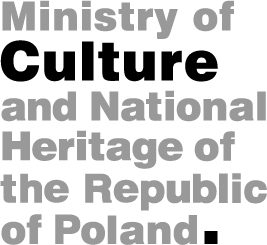|
|
Paul von Hindenburg Paul Ludwig Hans Anton von Beneckendorff und von Hindenburg, a German field marshal and statesman. The President of the Weimar Republic in the years 1925-1934. Born in Poznań on 2 October 1847; the son of a Prussian aristocrat. He had a brother, two years his junior (much later his sister was born). He took part in the wars Prussia vs. Austria (1866) and Prussia vs. France (1870-1871). From 1911 he was a retired officer but returned to active military service after the outbreak of the First World War. In 1914, he headed the 8th Prussian Army to victory over the Russians in the Tannenberg Battle in East Prussia. In 1916, he became the Chief Commander of the General Headquarters and authorised the activity of his substitute Erich Ludendorff – the originator of the concept of so called "total war", i.e. the subordination of the entire German economy to the needs of war. After the death of President F. Ebert, he won the election with a large majority in 1925, and became the president – a living symbol of the past power of the German State. He was known for his monarchist inclinations, therefore he was often called Erzatzkaiser (ersatz emperor). In 1932, he won the election again, leaving Adolf Hitler far behind, thanks to the support of the parties which had been hostile to him before (the centrists and social-democrats). He transferred the powers of the Chancellor of the Reich to Adolf Hitler through Franz von Papen and his own son, Ernest, on 30 January 1933. He sympathised with the Nazis, supporting them in the take-over of power. He died at Neudeck, the estate of his family in East Prussia, on 2 August 1934. Hindenburg's key feature of character which gained him popularity and fame at all stages of his military and political career was his inner balance and prudence. Hindenburg as a Prussian aristocrat and ardent Protestant was deeply devoted to his monarch and traditional Prussian values: loyalty, honour, piety, and obedience. Privately, he was known to be a family-man. He was happily married to Gertruda with whom he raised a son and two daughters. He was keen on hunting and walking. His physique was not extraordinary or outstanding, neither was his intellect brilliant nor his speeches inspiring, nevertheless, he enjoyed public sympathy and respect. In 1911, when Hindenburg turned 64, he was called back to army service to command the 8th Army in East Prussia. A victorious battle against the Russian 2nd Army under General Alexandr Samsonov in August 1914, was the turning point in his military career and life. He wrote to his wife on 30 August 1914: "I asked H.M. (His Majesty) to call the three-day long skirmishes The Battle of Grunwald. The place of Grunwald is located between Gilgenburg and Hohenstein, where the Poles and Lithuanians defeated the Germans in 1410. Now, 504 years later we took revenge..." His awareness of the importance of the victorious battle against this historical background indicates Hindenburg's sharp sense of the politics of memory. Simultaneously, the victory of Tannenberg appeared in the perception of German society as a victory of historic importance, while the name Hindenburg instantly began to denote a national hero, thus beginning the cult of his personality. Translated by Marzena Beata Guzowska
1
2
|
.jpg)
Lieutenant Hindenburg, years 1870/71.. .jpg)
The young officer (standing on the right) among his parents and siblings. .jpg)
Hindenburg with his wife, Gertrude Wilhelmine née Sperling, and their daughter Irmgard, born on 14 October 1880. .jpg)
The President of the Reich with his grandchildren. |
|||
| |||||
